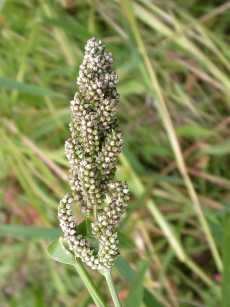Echinochloa esculenta facts for kids
Quick facts for kids Echinochloa esculenta |
|
|---|---|
 |
|
| Scientific classification | |
| Genus: |
Echinochloa
|
| Species: |
esculenta
|
| Synonyms | |
|
Echinochloa crus-galli subsp. utilis (Ohwi & Yabuno) T.Koyama |
|
Echinochloa esculenta is a type of grass. It is often called Japanese barnyard millet or Japanese millet. This plant is grown in countries like India, Japan, China, and Korea. People grow it for food and also to feed animals.
Japanese barnyard millet was usually grown in places where the land wasn't good for rice or where the weather was too cold for rice plants. However, over time, new types of rice were developed that could grow well in colder areas. Because of this, fewer farmers now grow Japanese barnyard millet.
The earliest signs of this plant being grown by people date back to about 2000 BC. This was during the Jōmon period in Japan.
How it Became a Farm Plant
Japanese barnyard millet was once a wild plant. It was made into a farm plant, or domesticated, from another wild grass called Echinochloa crus-galli. When plants are domesticated, humans choose the best ones to grow. This makes them more useful for people.
One important change during this process was that the grains of the millet became much bigger. This "grain enlargement" made the plant more useful for food. This change happened over a very long time, about one to two thousand years, in Japan.
What Its Name Means
The scientific name of a plant often tells us something about it.
Echinochloa
The first part of the name, Echinochloa, comes from the Greek language. It means 'hedgehog-grass'. This might be because some parts of the plant look a bit spiky, like a hedgehog.
Esculenta
The second part, esculenta, comes from Latin. It means ‘fit to eat’ or ‘edible [by humans]’. This part of the name clearly tells us that this plant is good for people to eat.
Images for kids


